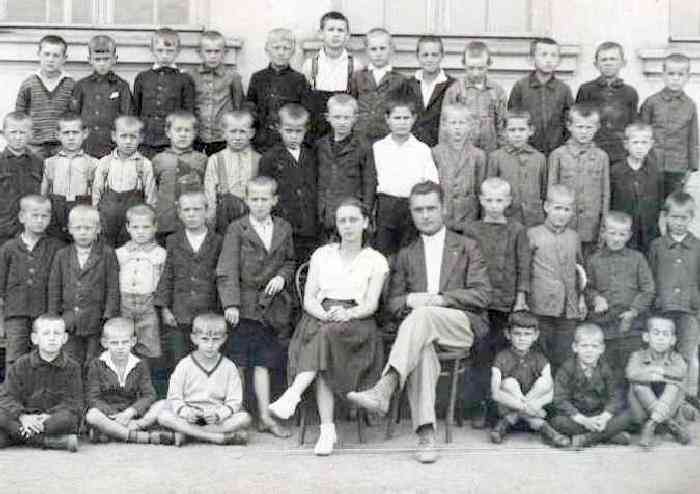 Figure 1.--School photographs areca good indicator of popular styles. This primary portrait was taken in 1931, about the mid-point of the inter-War era. The image is coded Uczniowie which may mean the village where the school is located.
Figure 1.--School photographs areca good indicator of popular styles. This primary portrait was taken in 1931, about the mid-point of the inter-War era. The image is coded Uczniowie which may mean the village where the school is located.

 Figure 1.--School photographs areca good indicator of popular styles. This primary portrait was taken in 1931, about the mid-point of the inter-War era. The image is coded Uczniowie which may mean the village where the school is located.
Figure 1.--School photographs areca good indicator of popular styles. This primary portrait was taken in 1931, about the mid-point of the inter-War era. The image is coded Uczniowie which may mean the village where the school is located.
|
Our written information is very limited. Most of our information on boys clothes during this period comes from available photographic images. One of our most valuable sources or school photographs. They not only tend to show clothes commonly worn, but often can be dated. The most obvious trend we notice during this period is the shift from kneepats to shorter cut short pants which had become standard by the late 1930s.
The convention of younger boys wearing dresses is not much in evidebnce afte World War I. More common for younger boys are the one-poice play uits as seen here (figure 1). Many boys in the 1920s were wearing non-descript suits. Some buttoned at the collar rather than having a V-front and lapels. Many boys wore their pants with suspenders. Kneepants were very common, often worn with long stockings.
Many Polish boys in the 1930s seem to be wearing clothes that look more like the 1920s. This may not have been the case of boys from fashionable families in Warsaw and other important cities. It does seem to have been the case in smaller towns and villages. The school portrait here is a good example. We are not sure if this reflects income levels or a more conservative fashion outlook. Perhaps some other factor is involved. Suits becme somewhat less common in the 1930s. Notice that many boys here are still wearing the earlier fashion of jackets buttoning at the collar. These jackets were no longe worn in America and Western Europe and were no longe very common in Germany. Many boys went to school in just shorts or shirts and sweaters. Sport collars were worn, but not very common. We notice sailor suits passing out of style. We notice boys in the 1930s beginning to wear short cut short pants. Long stockings were still common, but not as common as in the 1920s. Boys were increasingly wearing ankle and kneesocks. A HBC reader wrote, "The Polish reader wrote, I find it interesting that the hosiery seems to be so varied. Long stockings, ankle socks, knee socks--and, if I'm right, one boy barefoot. This seems to be similar to the 1951 Austrian photograph of a school class where the same variety is observable. Am I right to assume that the long stockings have nothing to do with chilly climate and are just a bow to old-fashioned formality? Or is there another explanation? Is class distinction relevant?" HBC has no additional information on this photograph. Given the range in attire, not only the hosiery, but also some boys in shirt sleeves and others in jackets the season is a bit difficult to assess. We would say, however, that long stockings look to us to be becoming associated primarily with seasonality. One notable observation is that almost all of the boys have close-cropped hair.
Navigate the Boys' Historical Clothing Web Site:
[Introduction]
[Activities]
[Biographies]
[Chronology]
[Clothing styles]
[Countries]
[Photography]
[Theatricals]
[Bibliographies]
[Contributions]
[FAQs]
[Glossaries]
[Satellite sites]
[Tools]
[Boys' Clothing Home]
Navigate the Boys' Historical Clothing Polish pages:
[Polish choirs]
[Polish movies]
[Polish orphanages]
[Polish school uniforms]
[Polish sailor suits]
[Polish youth groups]
Navigate the Boys' Historical Clothing Web Site:
[Return to the Main 20th century Polish inter-War chronology page]
[Australia]
[Canada]
[England]
[France]
[Germany]
[Ireland]
[Italy]
[New Zealand]
[Scotland]
[United States]
